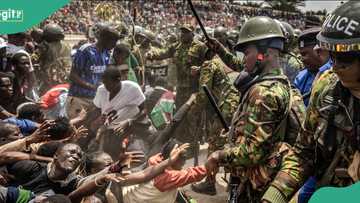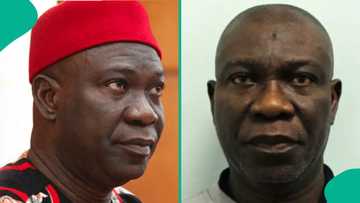Nigerian Navy: 7 Key Things to Know About Its History and Commands
- The Nigerian Navy has been described as one of Africa’s largest maritime forces, with roots stretching back to colonial times
- Its evolution from the Lagos Marines of 1887 to a modern naval institution reflected Nigeria’s growing need for coastal defence and maritime security
- Over the decades, the Navy expanded its constitutional role, taking on responsibilities that ranged from port administration to safeguarding the nation’s oil and gas sectors
The Nigerian Navy (NN) has been reported as one of the largest naval forces in Africa, with responsibilities that extend from coastal defence to oil and gas security.
Its journey from colonial beginnings to a modern maritime force has been marked by significant milestones.

Source: UGC
1. Nigerian Navy Origin in the Nigerian Marine
Research shows that the Nigerian Navy owed its origin to the Nigerian Marine, which was formed in 1914 after the amalgamation of Northern and Southern protectorates.
The Marine itself traced back to the Lagos Marines, first established in 1887 by the British Colonial Government.
2. Nigerian Marine Role in the First World War
The Nigerian Marine was said to have performed mostly coast guard functions, including port administration, dredging and ferry services. However, it also saw action during the First World War as part of the British military offensive against German-held Cameroon.
3. Reorganisation of Maritime Administration in 1955
In 1955, colonial authorities reportedly reorganised Nigeria’s maritime administration. This led to the creation of three new organisations: the Nigerian Ports Authority, the Inland Waterways Department, and the Nigerian Naval Force. The latter became the nucleus of the future Nigerian Navy.
4. Establishment of the Nigerian Naval Force in 1956
On June 1, 1956, the Nigerian Naval Force was officially established. Its primary responsibility was to train manpower and build infrastructure for a future Navy. Training began at HMNS QUORRA on November 1, 1957, with 60 junior ratings undergoing a six-month seamanship course.
5. Transformation into the Royal Nigerian Navy in 1959
In July 1959, Queen Elizabeth granted permission for the Force to use the title “Royal Nigerian Navy.” The name was later changed to “Nigerian Navy” in 1963 after Nigeria became a republic. The Navy Act of 1964 expanded its constitutional role to include “naval defence of Nigeria.”
6. Expanded Roles Under the Armed Forces Act
By 1993, naval leadership had pressed for a broader constitutional role. Research confirmed that the Armed Forces Decree 105, later incorporated into the 1999 Constitution, gave the Navy expanded military and constabulary duties, particularly in safeguarding Nigeria’s oil and gas sectors.
7. Nigerian Navy Commands and Headquarters
The Naval Headquarters (NHQ) was described as the administrative and policy-making organ of the Navy, led by the Chief of the Naval Staff. Under NHQ, three operational commands were established:
• Western Naval Command: Based in Apapa, Lagos, covering the Nigeria/Benin border to Delta State. Units included NNS BEECROFT, Naval Air Base Ojo, and Forward Operating Bases at Igbokoda and Badagry.
• Eastern Naval Command: Headquartered in Calabar, covering Delta State to the Nigeria/Cameroon border. Units included NNS VICTORY, NNS PATHFINDER, and Forward Operating Bases at Bonny and Ibaka.
• Central Naval Command: Located on Brass Island, Bayelsa State, covering coastal states Bayelsa, Delta and Edo, as well as inland Kogi. Units included NNS DELTA, NNS SOROH, and NNS LUGARD at Lokoja.
Facts about military officer who clashed with Wike
Legit.ng earlier reported that Lieutenant Ahmad M. Yarima, a Nigerian Navy officer, became a national sensation after a tense confrontation with Federal Capital Territory (FCT) Minister Nyesom Wike in Abuja.
The incident occurred on November 11, 2025, at Plot 1946 in Gaduwa District, during the enforcement of a stop-work order.
Don't miss out! Join Legit.ng's Sports News channel on WhatsApp now!
Source: Legit.ng






